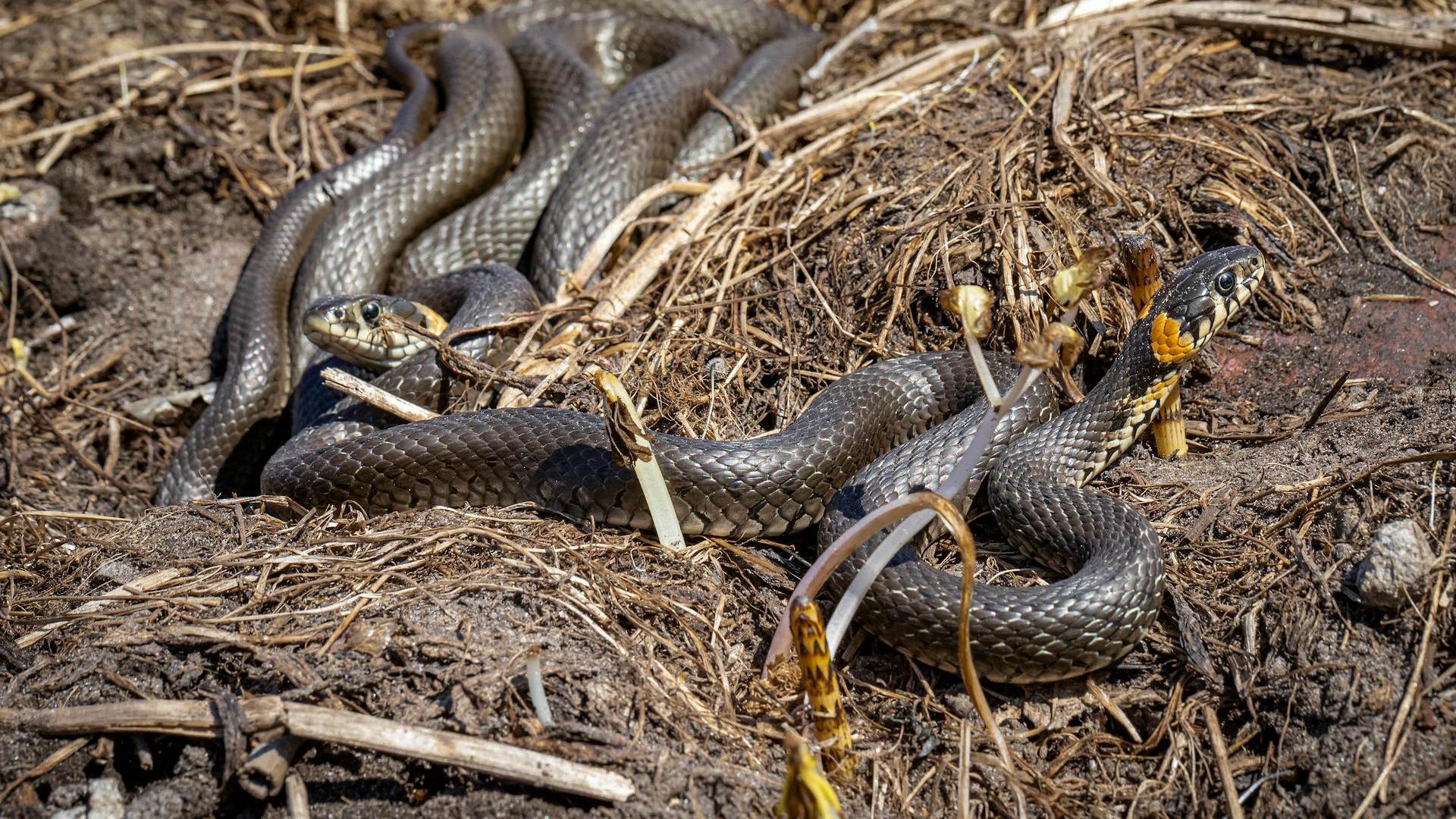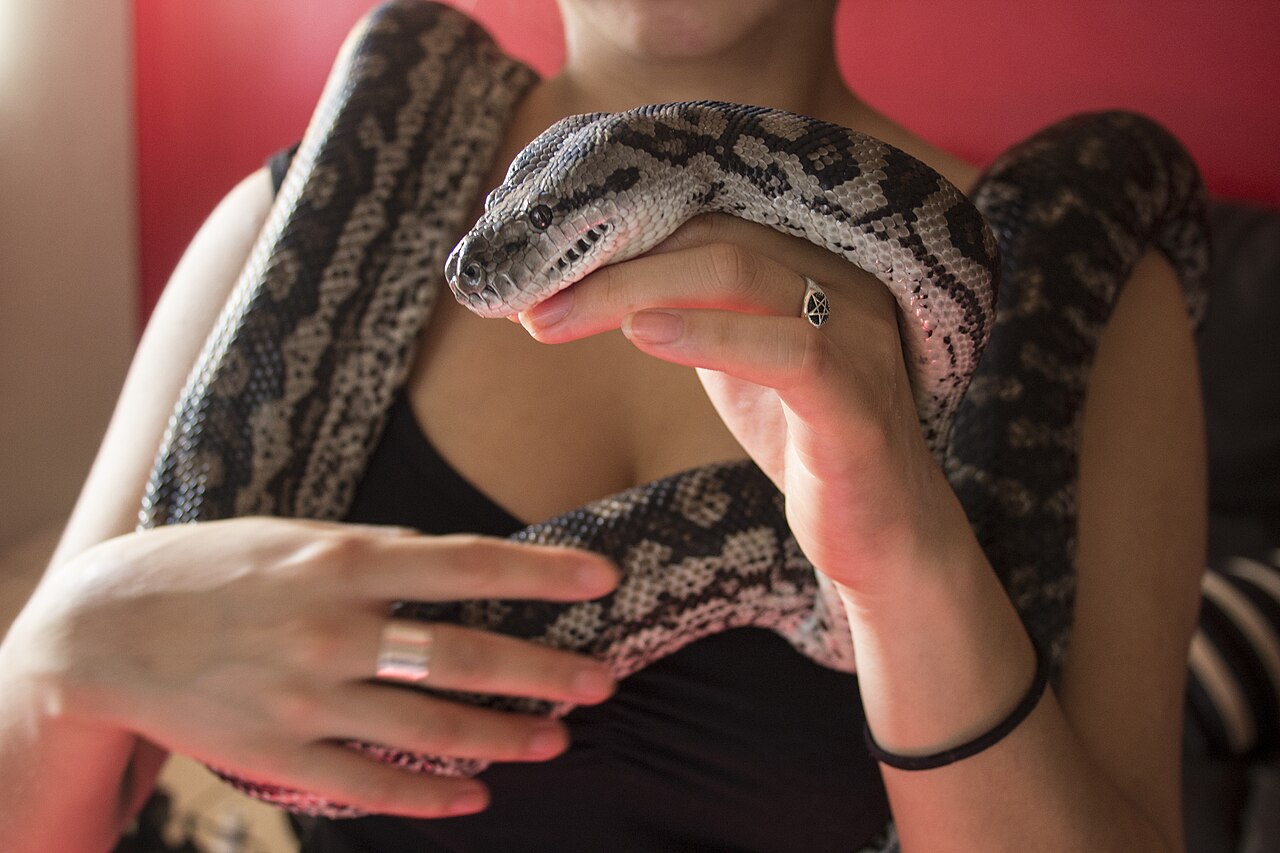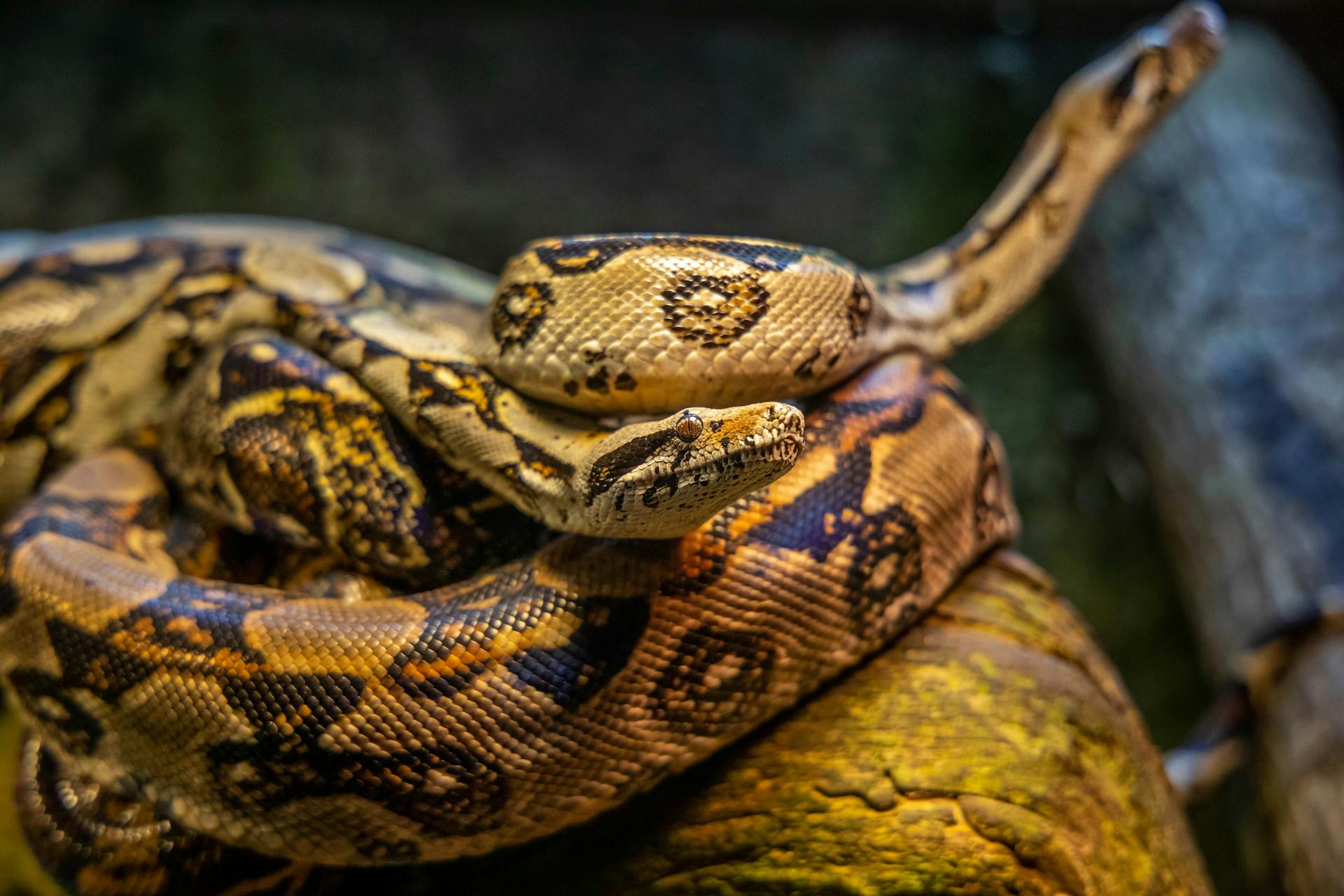In the mesmerizing world of reptiles, non-venomous snakes display some of nature’s most spectacular artistic expressions through their scales. Unlike their venomous counterparts that often advertise their danger through distinctive warning patterns, non-venomous species have evolved a stunning diversity of colors, stripes, blotches, and geometric designs primarily for camouflage, thermoregulation, and mate attraction.
From the intricate latticework of pythons to the vibrant rainbow hues of certain colubrids, these harmless serpents showcase nature’s boundless creativity. The following exploration reveals some of the most extraordinary pattern adaptations in the non-venomous snake world, highlighting how these visual masterpieces serve crucial ecological functions while captivating human observers with their breathtaking beauty.
The Iridescent Marvel: Rainbow Boa
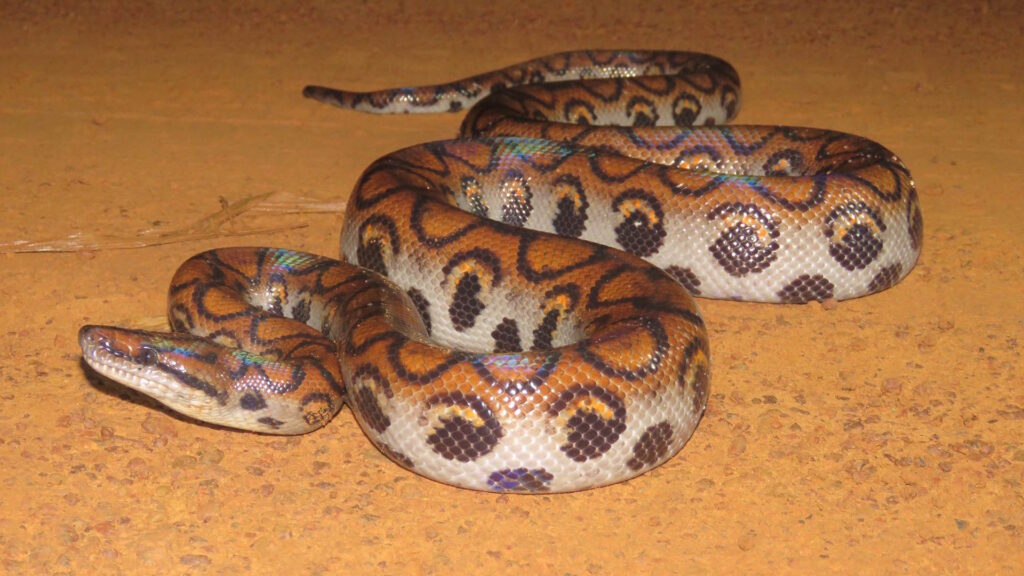
The Rainbow Boa (Epicrates cenchria) possesses one of the most magical appearances in the snake world, earning its name from the extraordinary iridescent sheen that ripples across its scales. This optical phenomenon occurs due to microscopic ridges on the snake’s scales that refract light into rainbow-like patterns, creating a mesmerizing display that shifts with each movement and lighting condition.
Native to Central and South America, these snakes feature a base coloration of rich browns and reds, overlaid with darker, irregular blotches that create depth and dimension. Though the iridescence serves no clear evolutionary advantage, scientists believe it may help the snake blend into wet, reflective environments of the rainforest floor.
When kept in captivity, many enthusiasts note that proper humidity levels significantly enhance the rainbow effect, making these snakes living showcases of nature’s optical brilliance.
The Living Checkerboard: Western Hognose Snake
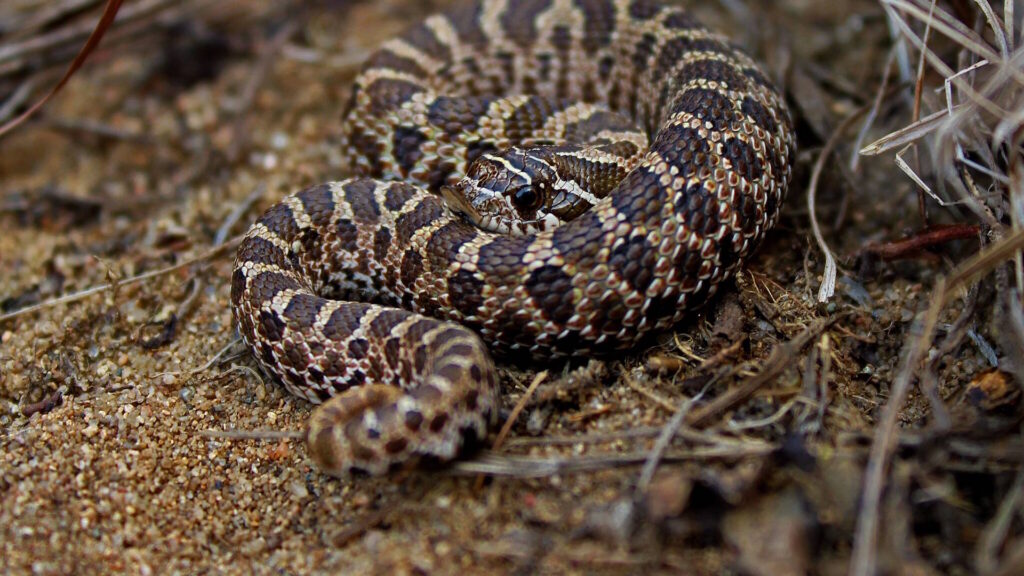
The Western Hognose Snake (Heterodon nasicus) displays one of the most distinctive checkerboard patterns in the snake kingdom, resembling an expertly crafted game board stretched along its body. Their most characteristic feature is the alternating dark brown or black rectangular blotches set against backgrounds ranging from yellow and tan to olive-green and gray, creating a striking contrast that varies significantly between individuals.
This checkerboard arrangement is complemented by smaller lateral blotches and an upturned snout that gives the species its common name. Beyond their visual appeal, these patterns serve as excellent camouflage in their native prairie and semi-arid habitats across North America’s central regions.
Interestingly, juvenile Western Hognose Snakes often showcase more vibrant and defined patterns than adults, whose colors may fade slightly with age while retaining their distinctive checkered arrangement.
The Geometric Genius: Ball Python
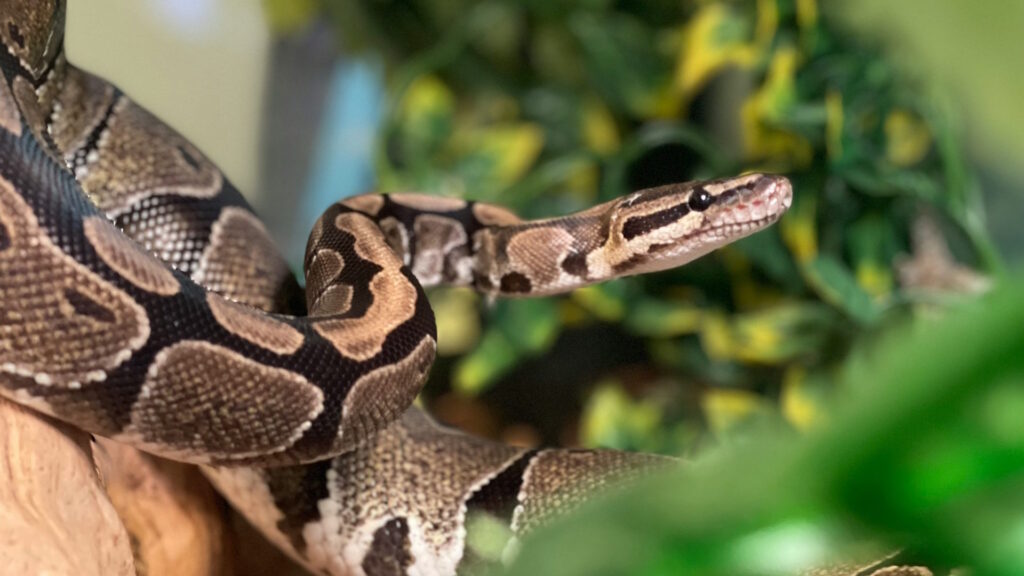
The Ball Python (Python regius) represents nature’s mastery of geometric precision with its complex pattern of interlocking alien-head shaped blotches and precise borders. In their natural “wild type” form, these snakes display dark brown or black patterns set against a rich gold or tan background, creating striking contrast that breaks up their outline when resting among forest debris.
Each pattern is completely unique to the individual, functioning similarly to a human fingerprint and allowing researchers to identify specific snakes without artificial marking systems. The patterns aren’t merely random—they follow mathematical principles of symmetry while exhibiting incredible variation, which has made the Ball Python the most morphed snake in the reptile hobby with thousands of selectively bred pattern and color variations.
Despite this human-driven diversity, the wild form’s natural pattern remains perfectly adapted for camouflage in its native West African forests, demonstrating evolution’s artistic perfection.
The Desert Masterpiece: Kenyan Sand Boa
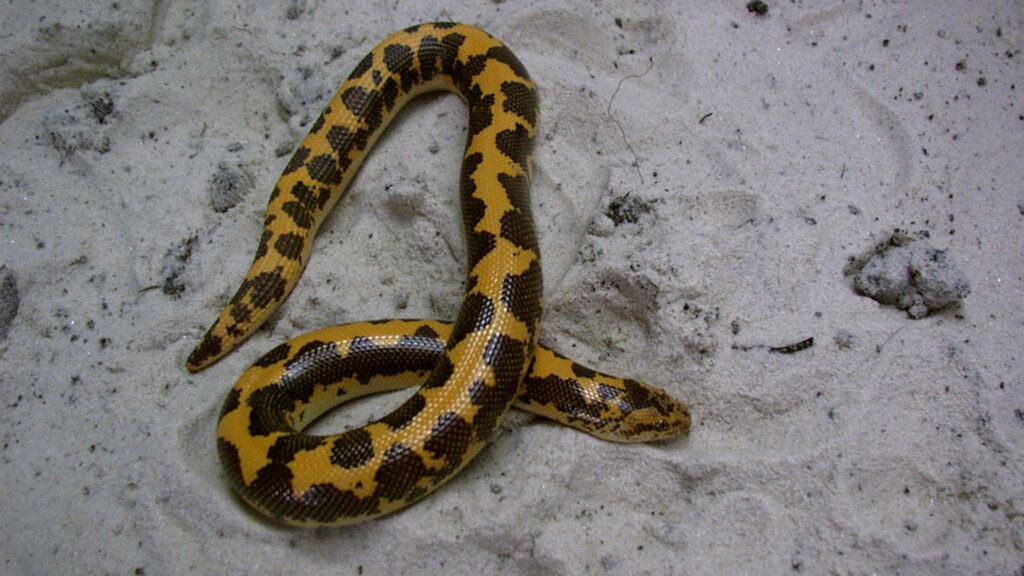
The Kenyan Sand Boa (Gongylophis colubrinus) exhibits a minimalist yet effective pattern perfectly suited to its sandy habitat in eastern Africa. These stout-bodied snakes display large, irregular orange-brown to reddish blotches scattered across a cream or pale yellow background, creating a pattern reminiscent of dappled sunlight filtering through vegetation onto desert sand.
Unlike many patterned snakes whose markings run continuously along their bodies, the Kenyan Sand Boa’s blotches appear almost randomly placed, enhancing their camouflage effectiveness when partially buried in loose substrate. This pattern serves a crucial survival function, as these ambush predators spend much of their time with only their eyes and nostrils exposed above the sand, waiting for prey to approach.
The contrast between their bold dorsal pattern and completely plain, unmarked cream belly further demonstrates their specialized adaptation for a semi-fossorial (burrowing) lifestyle in arid environments.
The Forest Floor Mimic: Corn Snake
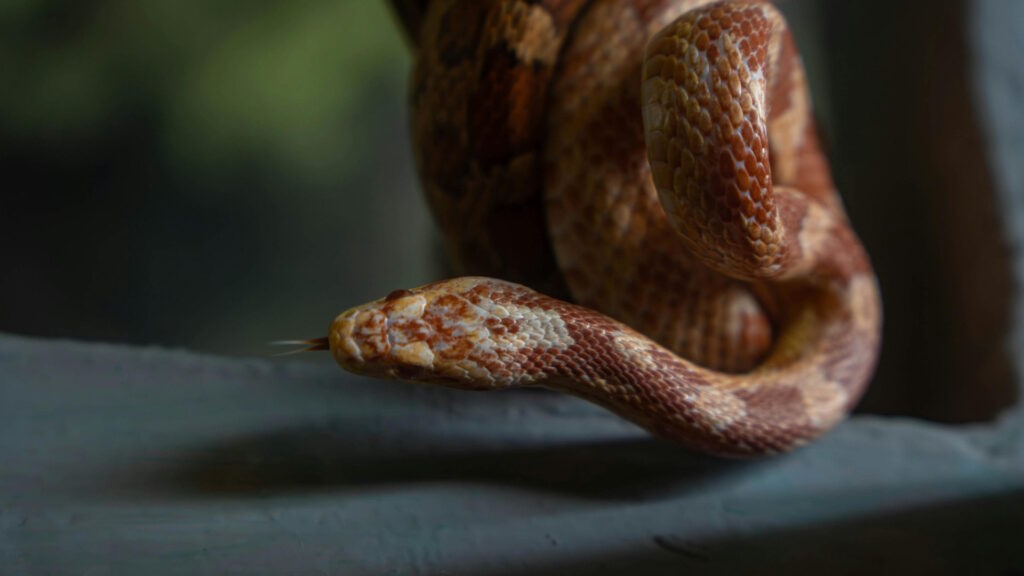
The Corn Snake (Pantherophis guttatus) showcases nature’s artistry through its extraordinary mimicry of forest floor leaf patterns and dappled sunlight. These North American natives display a base color ranging from orange to brownish-red, adorned with large, bordered saddle-shaped blotches in rusty red or brown hues, flanked by smaller lateral markings that create depth and dimension.
The ventral surface features an equally impressive but entirely different pattern resembling a black and white checkerboard, adding to their visual complexity. Each individual’s pattern contains subtle variations, with eastern populations typically displaying more vibrant orange colorations while western variants tend toward deeper reds and browns.
This patterning provides perfect camouflage among fallen autumn leaves and pine straw in their native southeastern United States woodland habitats. The corn snake’s remarkable pattern adaptation has contributed to its popularity in captivity, where selective breeding has produced hundreds of color variations while maintaining the distinctive saddle-pattern arrangement that makes these serpents instantly recognizable.
The Living Rope: Rosy Boa

The Rosy Boa (Lichanura trivirgata) displays one of the most elegant longitudinal pattern arrangements in the snake world, with three distinct stripes running the entire length of its cylindrical body. These stripes typically appear in shades of rust, orange, or salmon against backgrounds ranging from cream to tan to gray, creating a visual effect reminiscent of a decoratively woven rope.
The pattern’s brilliance lies in its simplicity—unlike complex blotched patterns, these uninterrupted lines create a powerful longitudinal illusion that helps conceal the snake’s movement direction and body shape among the rocky terrain of its southwestern United States and Mexican habitats.
Regional variations of this pattern are pronounced enough that herpetologists can often identify the specific geographic origin of a Rosy Boa based solely on its coloration, with coastal populations featuring more subdued grays and inland desert specimens showcasing vibrant salmon-orange stripes. This pattern’s effectiveness is complemented by the snake’s stocky build and smooth scales that give it a polished, almost glazed appearance in natural sunlight.
The Emerald Tapestry: Green Tree Python
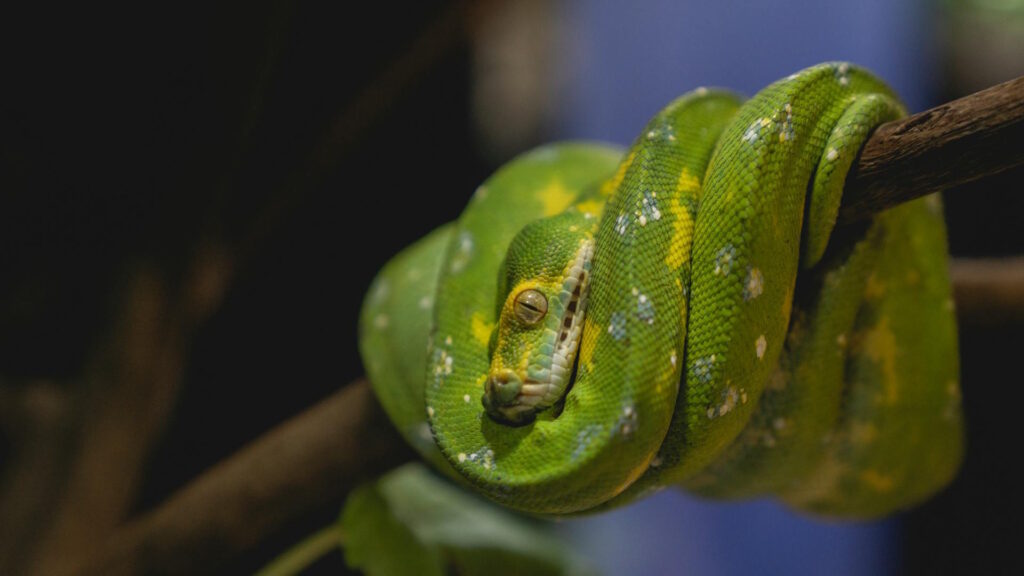
The Green Tree Python (Morelia viridis) presents one of the most dramatic ontogenetic color transformations in the reptile world, coupled with a subtle but sophisticated adult pattern. Beginning life as either bright yellow or deep red juveniles (depending on their geographical origin), these snakes undergo a complete color metamorphosis to emerge as adults cloaked in a brilliant emerald green that makes them nearly invisible among the rainforest canopies of New Guinea and northern Australia.
Upon closer inspection, adult specimens reveal a delicate pattern of irregular white or blue-white flecks and dashes along their spine, creating a “lightning ridge” effect that breaks up their outline when viewed from below against dappled sunlight. This pattern variation extends to geographic differences, with specimens from different islands displaying distinctive white marking distributions—Biak Island pythons frequently show extensive blue-white speckling, while mainland forms might display more scattered white scales arranged in irregular vertebral designs.
The contrast between their vibrant green bodies and these precise white accents creates a tapestry-like effect that has made them among the most visually striking and sought-after display snakes in the world.
The Desert Illusion: Gopher Snake
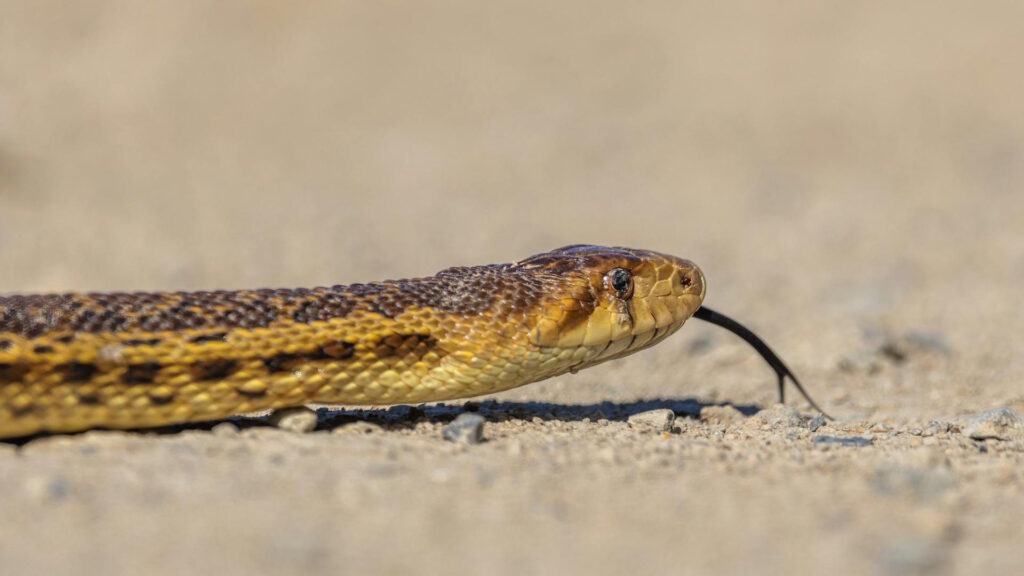
The Gopher Snake (Pituophis catenifer) demonstrates evolutionary pattern mimicry at its most sophisticated, with markings so similar to the venomous rattlesnake that even experienced observers must look twice. Their bodies feature large, dark brown to black blotches on a tan or yellowish background, with the pattern shifting from rectangular saddles along the spine to smaller alternate blotches on the sides.
The brilliance of this mimicry extends beyond visual appearance—when threatened, these harmless snakes flatten their heads to appear triangular, hiss loudly, and vibrate their tails against dry vegetation to create a rattling sound, completing the rattlesnake impersonation that deters potential predators.
Regional subspecies display remarkable pattern adaptations to local environments, with desert populations wearing lighter backgrounds with high-contrast dark blotches, while northwestern forest dwellers feature more subdued patterns with brownish backgrounds.
Despite their intimidating appearance and defensive displays, their pattern serves primarily as a Batesian mimicry system—an evolutionary strategy where harmless species gain protection by resembling dangerous ones.
The Jungle Gradient: Brazilian Rainbow Boa
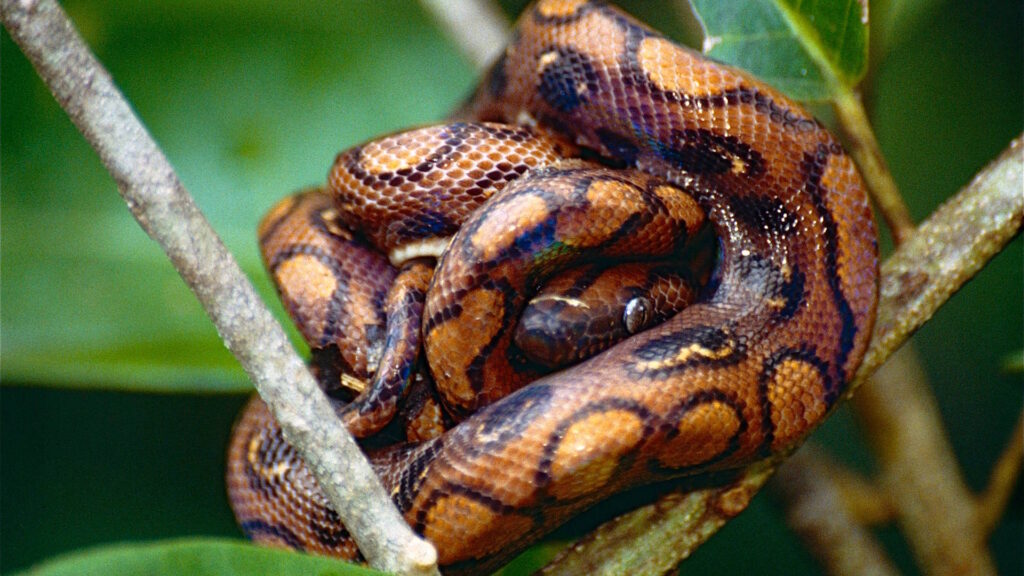
The Brazilian Rainbow Boa (Epicrates cenchria) combines two remarkable visual features: iridescent scales that shimmer with rainbow colors under direct light and a gradient pattern of interconnected circular markings. These distinctive “eye spots” or ocelli begin as perfect circles near the head, gradually elongating and connecting into chain-like structures toward the tail, creating a visual gradient that flows along the serpent’s length.
The base coloration ranges from deep mahogany to vibrant orange-red, with the darker pattern elements appearing almost burgundy in certain lighting conditions. Unlike many patterned snakes, the Brazilian Rainbow Boa’s markings are enhanced rather than disguised by water, as moisture intensifies both the underlying coloration and the iridescent effect, suggesting an adaptation specifically evolved for their humid Amazonian habitat.
The pattern’s function extends beyond camouflage—the circular markings create visual disruption that makes it difficult for predators to determine the snake’s exact body position or direction of movement, providing a survival advantage in the complex visual environment of rainforest undergrowth.
The Perfect Pinstripe: California Kingsnake

The California Kingsnake (Lampropeltis californiae) in its striped form exhibits one of nature’s most precisely rendered linear patterns, with unbroken bands running from head to tail with mathematical precision. The classic striped variant displays a stark white or creamy yellow alternating with deep black or dark brown, creating a high-contrast pattern reminiscent of perfectly applied pinstriping.
This longitudinal pattern serves multiple functions—providing disruptive camouflage that breaks up the snake’s outline when moving through dappled sunlight, creating confusion for predators attempting to track their movement, and potentially serving as a warning pattern that mimics certain venomous species despite the kingsnake’s harmless nature. The parallel with railroad tracks has earned some particularly bold-patterned specimens the nickname “train track kingsnakes” among enthusiasts.
Regional variations across California and into Mexico demonstrate subtle adaptations to local environments, with desert populations often displaying brighter, more contrasting stripes compared to their woodland counterparts, whose patterns may incorporate more brown tones to blend with forest floors.
The Blonde Bombshell: Lavender Albino Reticulated Python
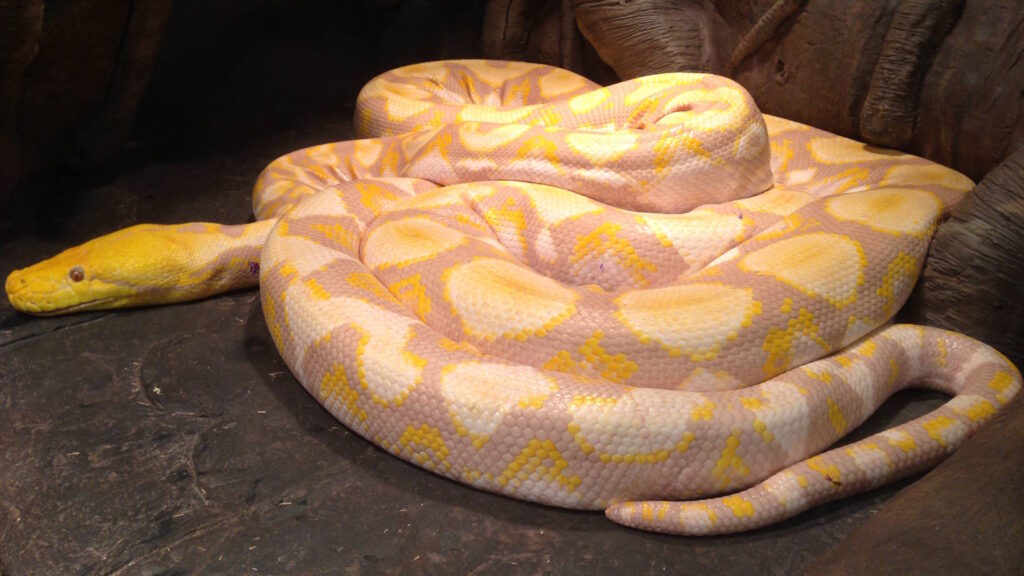
The Lavender Albino Reticulated Python (Python reticulatus) represents one of the most spectacular naturally occurring color mutations found in wild snake populations, later refined through selective breeding. These magnificent serpents display a network pattern of golden-yellow “netting” overlaid on a background ranging from pure white to soft lavender, creating an ethereal appearance unlike any other snake.
The reticulated pattern—which gives the species its name—forms a complex network resembling an intricate mesh or web, with each scale precisely colored to create perfect geometric shapes that flow seamlessly from head to tail. Unlike many albino reptiles that appear simply white and red, the lavender phase incorporates subtle purple hues throughout the body, with eyes appearing as striking ruby red due to the absence of melanin pigment.
This pattern’s wild form evolved as perfect camouflage for dappled jungle light, but the albino variation transforms this functional design into what many consider the most visually stunning pattern in the snake world, demonstrating how a single genetic mutation can dramatically reimagine an already complex natural design.
The Living Puzzle: Milk Snake
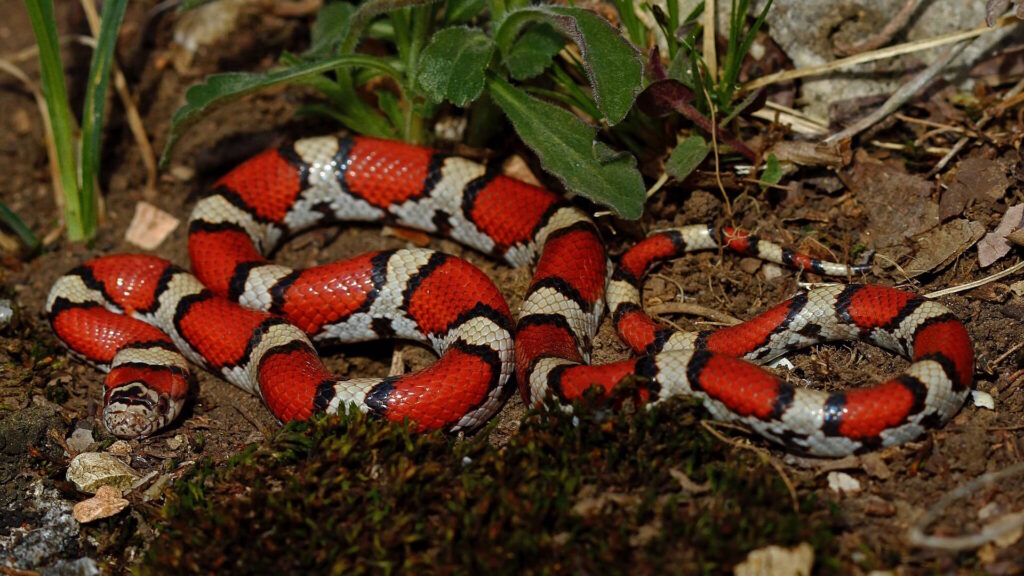
The Milk Snake (Lampropeltis triangulum) displays one of the most variable and regionally diverse pattern arrangements of any North American serpent, with over twenty recognized subspecies each featuring distinct color combinations. The most iconic form—the Eastern Milk Snake—wears a pattern of rich reddish-brown saddles bordered by thin black edges set against a cream or gray background, creating a puzzle-piece effect across its entire body.
In striking contrast, the Scarlet King Snake subspecies presents a classic example of Batesian mimicry with bold bands of red, black, and yellow (or white) that closely resemble the venomous Coral Snake, demonstrating the rhyme “red touch yellow, kill a fellow; red touch black, friend of Jack” used to distinguish these harmless mimics from their dangerous models.
The pattern’s complexity serves different ecological functions across their range—northern populations use their muted patterns for camouflage among forest detritus, while southern variants with bright warning colors benefit from predators’ innate avoidance of similar-looking venomous species. This remarkable diversity within a single species complex showcases evolution’s ability to craft specialized visual solutions for different ecological challenges.
The Phantom Weaver: Ghost Corn Snake
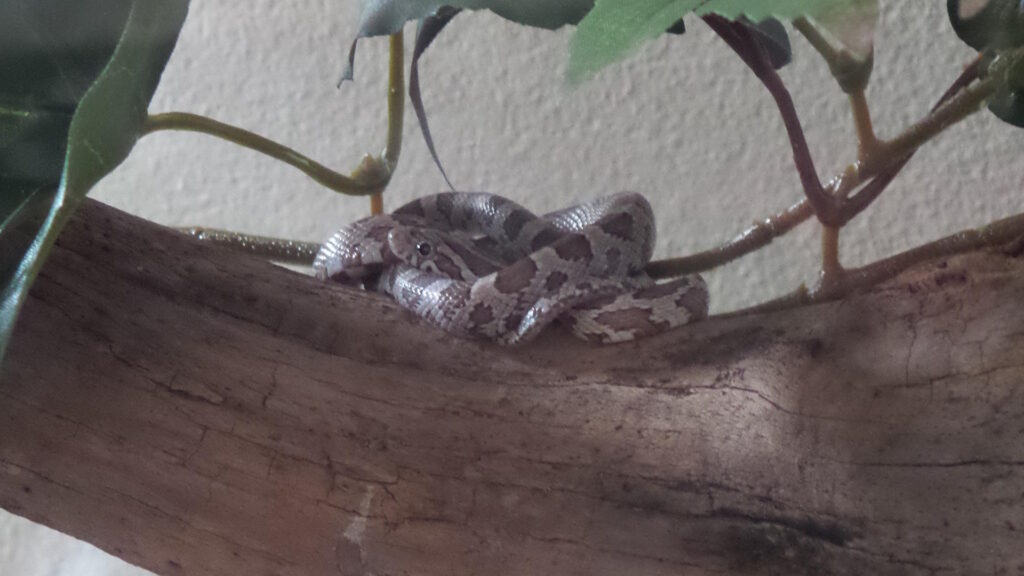
The Ghost Corn Snake represents one of the most hauntingly beautiful pattern mutations in captive-bred snakes, displaying the characteristic corn snake saddle pattern but rendered in ethereal, muted tones. This selective breeding achievement combines two genetic traits—the “hypomelanism” that reduces black pigmentation and “anerythrism” that reduces red pigments—resulting in a snake whose normal bright orange and red coloration is transformed into a palette of soft lavenders, silvery grays, and phantom tans.
The pattern retains the classic corn snake arrangement of bordered dorsal saddles complemented by lateral blotches, but each element appears as though viewed through fog or mist, creating a dreamy, otherworldly effect. This subtle coloration reveals intricate details within the pattern that are often overwhelmed by stronger pigmentation in normal specimens, allowing observers to appreciate the delicate transitions between pattern elements and the precise scale-by-scale color differentiation.
Ghost corn snakes demonstrate how selective breeding can create entirely new aesthetic interpretations of natural patterns without altering the underlying genetic blueprint that determines the arrangement of scales and markings.
The Snow Leopard Serpent: Angolan Python
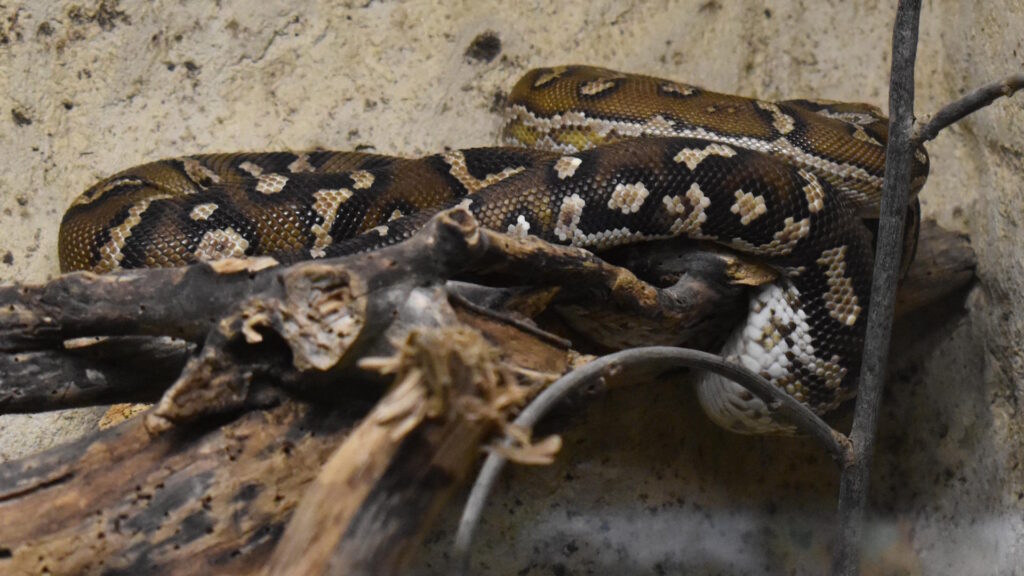
The Angolan Python (Python anchietae) showcases one of the most stunning examples of convergent evolution in pattern design, developing markings remarkably similar to those of the snow leopard despite evolving in completely different environments and animal classes. These medium-sized pythons display irregularly shaped, dark-edged blotches scattered across a background ranging from pale gray to tan, creating a spotted effect that closely resembles the iconic rosettes of the elusive big cat.
This pattern functions brilliantly as camouflage in the python’s native rocky outcroppings and scrublands of southwestern Africa, breaking up the snake’s outline among the dappled light and shadow of its habitat. What makes this pattern truly exceptional is its three-dimensional quality—the dark borders surrounding each blotch create an illusion of depth, making the markings appear to float above the base coloration.
Unlike many python species whose patterns fade or blur with age, the Angolan Python’s leopard-like markings remain crisp and well-defined throughout its lifespan, maintaining their visual impact from hatchling to adult and demonstrating nature’s ability to develop similar pattern solutions in completely unrelated species facing similar camouflage challenges.
Conclusion

The world of non-venomous snakes provides us with an extraordinary gallery of natural art, where evolution has crafted patterns serving crucial survival functions while simultaneously creating some of nature’s most visually captivating designs. From the iridescent shimmer of rainbow boas to the precise geometric arrangements of pythons, these remarkable reptiles demonstrate nature’s boundless creativity and attention to detail.
Each pattern tells a story of adaptation to specific environments, predator-prey relationships, and reproductive strategies, often refined over millions of years of evolutionary pressure. As we continue to study and appreciate these magnificent creatures, we gain not only scientific understanding but also inspiration from their flawless execution of form and function.
The incredible diversity of non-venomous snake patterns stands as living proof that nature remains the ultimate artist, working with scales and pigments to create masterpieces that continue to captivate human.

